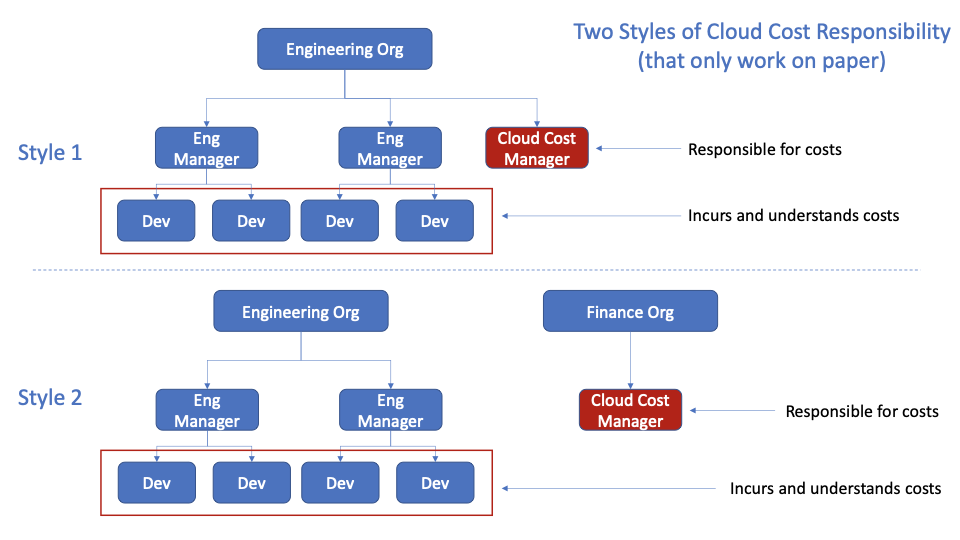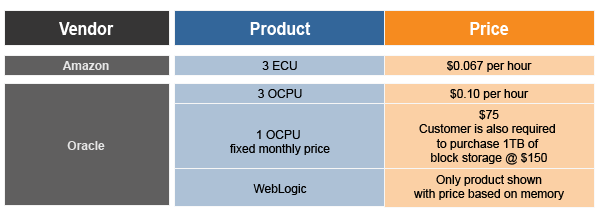In today’s digital age, businesses are increasingly adopting cloud computing to store and manage their data. As more and more companies move to the cloud, the question of cloud cost models becomes increasingly important. Cloud cost models refer to the various pricing structures used by cloud service providers to charge their customers for their services.
There are several different cloud cost models, each with its pros and cons. Understanding these cost models is essential for businesses to make informed decisions about their cloud usage and budgeting. In this article, we will explore the different types of cloud cost models and help you determine which one is best for your business needs. Join me as we delve into the world of cloud computing and unravel the mystery of cloud cost models.
Cloud Cost Models are the pricing structures and methods used to calculate the cost of using cloud services.
The three most common models are pay-as-you-go, subscription and reserved instances. Pay-as-you-go is the most flexible and cost-effective model. It involves paying for the exact amount of cloud services used on an hourly basis, with no upfront commitment. Subscription model requires a one-time payment for an extended period of usage, while the reserved instance model requires a long-term commitment, but offers the lowest cost per hour.

What are the Cloud Cost Models?
When it comes to cloud computing, the cost models are an integral part of the overall package. Cloud cost models refer to the way in which cloud services are priced and billed to the customer. It’s important to understand the various cost models and what they entail in order to make the most informed decision when it comes to selecting the right cloud service provider. This article will provide an overview of the different cloud cost models and how they work.
Pay-As-You-Go Model
The Pay-As-You-Go model is a cloud cost model that is based on the usage of the service. This model is the most popular and simplest to understand. Customers are billed on a per-usage basis, which means that they are only charged for the resources they use. This model allows customers to scale up or down depending on their usage, which makes it ideal for businesses that need to quickly adjust their cloud usage. This model is also beneficial for businesses that need to optimize their cloud costs.
With the Pay-As-You-Go model, customers are charged for the exact amount of resources they use, which helps them to avoid any overspending or wastage. This model is also beneficial for customers who have a limited budget, as they can easily control their costs and only pay for what they need.
Reservation Model
The Reservation model is a cloud cost model that is based on a fixed rate for a specific amount of resources. This model is typically used by businesses that have a steady and consistent demand for resources. With this model, customers can reserve a specific amount of resources for a period of time, such as one year. This model is ideal for businesses that want to lock in specific resources at a set rate.
The Reservation model is beneficial for businesses that need to ensure they have a consistent supply of resources. This model also allows customers to take advantage of discounted rates. Customers can also take advantage of the flexibility of the model, as they can easily scale up or down depending on their usage. This model is also beneficial for businesses that have a limited budget, as they can easily control their costs and only pay for what they need.
Spot Model
The Spot model is a cloud cost model that is based on bidding for resources. This model allows customers to bid on unused capacity at a discounted rate. This model is ideal for businesses that want to take advantage of lower prices. With this model, customers can take advantage of discounted rates, as well as the flexibility to scale up or down depending on their usage.
The Spot model is beneficial for businesses that have a limited budget, as they can easily control their costs and only pay for what they need. This model also allows customers to take advantage of lower prices and make the most of their cloud budget. This model is also ideal for businesses that need to quickly scale up or down, as they can easily adjust their bids to meet their needs.
Commitment Model
The Commitment model is a cloud cost model that is based on a fixed rate for a specific amount of resources. This model is typically used by businesses that have a steady and consistent demand for resources. This model allows customers to commit to a specific amount of resources for a period of time, such as one year. This model is ideal for businesses that want to lock in specific resources at a set rate.
The Commitment model is beneficial for businesses that need to ensure they have a consistent supply of resources. This model also allows customers to take advantage of discounted rates. Customers can also take advantage of the flexibility of the model, as they can easily scale up or down depending on their usage. This model is also beneficial for businesses that have a limited budget, as they can easily control their costs and only pay for what they need.
Hybrid Model
The Hybrid model is a cloud cost model that combines the features of the other cost models. This model allows customers to take advantage of the features of both the Pay-As-You-Go and the Reservation models. With this model, customers can take advantage of the flexibility of the Pay-As-You-Go model and the discounted rates of the Reservation model. This model is ideal for businesses that need to quickly scale up or down and want to take advantage of discounted rates.
The Hybrid model is beneficial for businesses that have a limited budget, as they can easily control their costs and only pay for what they need. This model also allows customers to take advantage of both the flexibility and the discounted rates of the other cost models. This model is also ideal for businesses that need to quickly adjust their cloud usage and take advantage of lower prices.
Frequently Asked Questions
Cloud cost models refer to the various pricing models used to charge customers for cloud services, such as Infrastructure as a Service (IaaS), Platform as a Service (PaaS), and Software as a Service (SaaS).
What are the different cloud cost models?
There are three main cloud cost models: subscription, pay-as-you-go, and hybrid. Subscription models involve a customer paying a fixed fee for a given period of time, such as a month, quarter, or year. The pay-as-you-go model is based on usage and customers are charged based on the resources they consume. The hybrid model is a combination of both subscription and pay-as-you-go models.
How is the pay-as-you-go model priced?
The pay-as-you-go model is based on usage, so customers are charged based on the resources they consume. This could include CPU cycles, storage, bandwidth, and other resources. The pricing model is usually based on a per-hour or per-minute rate, and customers are charged only for the time they use the resources. This model gives customers the flexibility to pay only for what they use and scale up or down as needed.
What are the advantages of the subscription model?
The subscription model is attractive to customers who want to save money and ensure they have the resources they need without worrying about overspending. Customers who opt for a subscription model typically pay a fixed fee over a given period of time, such as a month or a year. This model is ideal for customers who have a consistent and predictable workload. The subscription model also provides customers with the ability to budget and plan in advance, as they know exactly what they will be paying each month.
What are the advantages of the hybrid model?
The hybrid model is a combination of the subscription and pay-as-you-go models, giving customers the flexibility to scale up or down as needed. This model allows customers to take advantage of the cost savings of the subscription model for their more consistent workloads and the flexibility of the pay-as-you-go model for their variable workloads. This model also allows customers to pay for only the resources they need, when they need them, giving them the ability to save money and optimize their cloud usage.
What are the benefits of using cloud cost models?
Cloud cost models offer customers the ability to save money by only paying for the resources they need, when they need them. The pay-as-you-go model allows customers to scale up or down as needed, while the subscription model provides them with the ability to budget and plan in advance. The hybrid model gives customers the best of both worlds, providing them with the cost savings of the subscription model and the flexibility of the pay-as-you-go model. Cloud cost models also give customers more control over their cloud usage and expenses, allowing them to optimize their cloud costs.

In conclusion, understanding the various cloud cost models is essential for any organization that wants to take full advantage of the benefits of cloud computing. The pay-per-use model is ideal for companies with varying workloads, while the reserved instance model is more suitable for steady workloads. The spot instance model is perfect for organizations that require large amounts of computing power but are willing to tolerate some degree of instability. The hybrid model is ideal for companies that want to maintain a balance between cost optimization and flexibility.
Overall, the key to selecting the right cloud cost model is to understand your organization’s workload requirements and to match them to the features and capabilities of each model. With the right cloud cost model in place, companies can save significant amounts of money while still enjoying the benefits of cloud computing, such as scalability, flexibility, and reliability. By making informed decisions about cloud cost models, organizations can achieve a competitive advantage in today’s fast-paced business environment.


